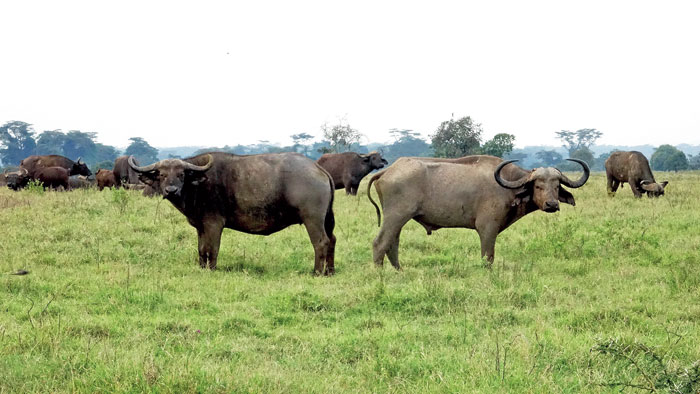At a moment when many assume to have seen all there is to see in Kenya, when all East African safaris have seemingly been catalogued in such infinite detail that it would seem that there is no more to be found, Lake Nakuru and Lake Naivasha throw up a surprising spectacle of nature and wildlife. If that combination is on your mind, then Lake Nakuru, too, surely fits the bill.
Nakuru — meaning ‘dusty place’ in the traditional Kenyan tongue — the national park almost adjacent to Nakuru town, was established in 1961. It started off small, only encompassing the famous lake and the surrounding mountainous terrain, but has since been extended to include large swathes of savannah grassland.
A three-hour, 164km hilly drive from Nairobi that took us past Kenyan coffee plantations got us to Lake Nakuru National Park. It’s centred on one of the rift valley soda lakes and protected and surrounded by forest lands at an altitude of almost 5,700ft above sea level. Though animal population in general is not in abundance in this part of Kenya, the park definitely boasts of a sizeable lion population. Among other predators residing at the park are leopards and cheetahs, though they are difficult to spot. The park also has large pythons inhabiting the dense woodlands that can often be seen crossing roads or dangling from trees.
The national park is perhaps one of the few places in the world where one can witness black rhinos and southern white rhinos. According to the most recent census, there are about 80 rhinos in Lake Nakuru National Park. The park has recently been enlarged, partly to provide space for the rhinos and fenced off from the town of Naivasha to keep out poachers rather than to restrict the movement of wildlife.
The presence of algae in the lake attracts a large number of birds, especially flamingos that line the shore along with a large number of other migratory birds. About six years back the lake experienced an alarming increase in water levels that has also led to a huge loss of forest land and, since then, there has also been a steep decline in the migration of flamingos to this part of the region as this flock of wading birds depends on the region’s water and food conditions. The best vantage point at this national park is at the Baboon Cliff from where one can witness the vast expanse of the lake.
The most exciting factor about Lake Nakuru is the stay at the Naishi House Cottage managed by the Kenya Wildlife Service, which somewhat reminds me of the log huts at Kanha National Park in Madhya Pradesh.

Shiladitya Chaudhury
Started in the late ’60s and till about the mid ’80s, the cottage used to be the official residence of the forest warden; a two-bedroomed place nestled deep inside the forest with just one guard at your service and with no electricity supply at night.
After a two-night stay at Naishi House cottage we were ready to drive back to Nairobi, when we suddenly changed our mind and decided to drop by for a couple of hours at Lake Naivasha.
I have always heard about the hippo population residing at this lake and I have always wanted to take a boat ride, getting close to the hippos. Naivasha is derived from the Masai word naiposha, meaning ‘rough weather’ because of the storms that are common to this region. The lake is home to over 400 species of birds and a sizeable population of hippos. The fish community in the lake has been highly variable over time, influenced by changes in climate, fishing effort and the introduction of invasive species.
The shores of the lake are known for its population of European immigrants settling down. Joy Adamson, the author of Born Free, lived on the shores of the lake till the late ’60s.

Shot with Nikon 7200 with a Nikon 18-300mm f3.5-6.3 lens and Sony RX 10 Mark III Shiladitya Chaudhury
As we were about to start our boat, to my surprise, we were not more than 15ft away from a pool of hippos. As the sound of the boat engine filled the air, a couple of hippos started descending towards the lake while others just ignored our presence. In my wildest of dreams I could not have imagined that we would just be circling around hundreds of hippos. It was truly a moment of bliss.
Shiladitya Chaudhury is a communication consultant and a restaurateur co-owning popular brands Oudh 1590, Chapter 2 and Master Dimsum. His passion for wildlife photography takes him to the remotest of jungles










